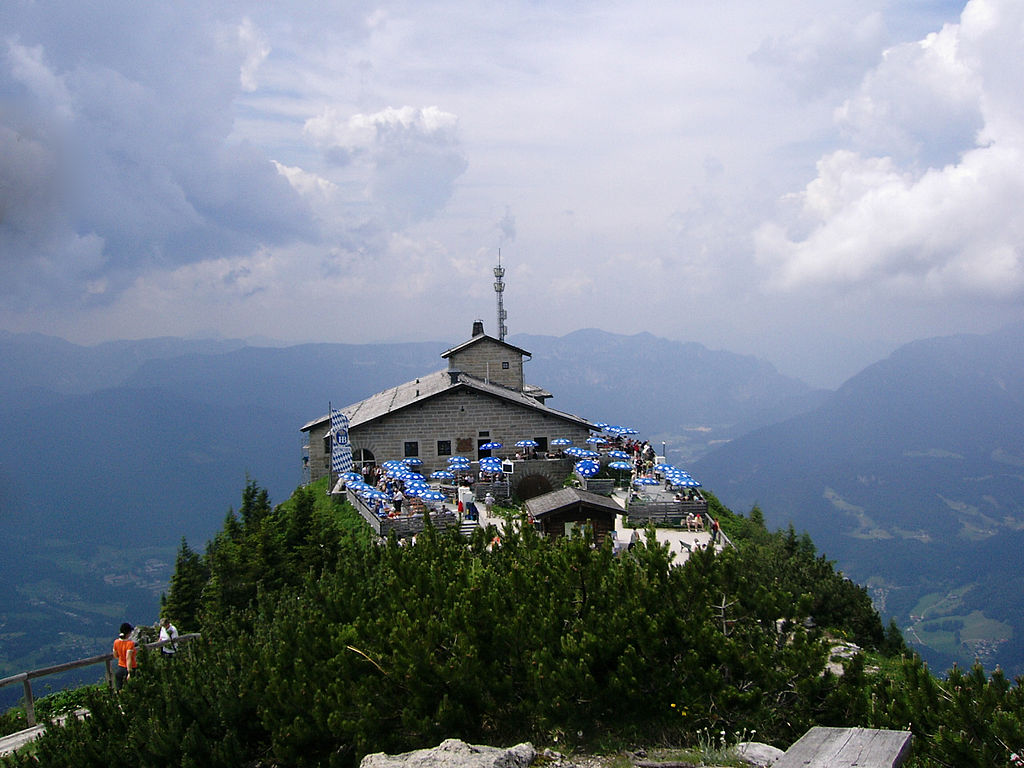German Nationalparks – Part 2: Berchtesgaden Posted by Sten on Feb 12, 2016 in Culture, Holidays
This is part 2 of the new series here on the German Blog, the German Nationalparks, a series on the 16 National Parks of Germany. Last week, I discussed the beautiful Schwarzwald, one of the most recently established Nationalparks. This week, we travel a bit further south to Nationalpark Berchtesgaden.
Der Nationalpark Berchtesgaden
Berchtesgaden is the southernmost Nationalpark of Germany, and most of the Park borders with Austria.
The Nationalpark was established on August 1, 1978 by the Bundesland (Federal State) Bavaria. The main goal was to protect nature in the area. The local municipalities had plans to build a cable car up to the Watzmann, the highest peak of the Berchtesgadener Land. The
What is special about the Nationalpark Berchtesgaden?
Much like the Schwarzwald, the Nationalpark Berchtesgaden has a wonderful short video that displays its natural beauty. And even though Berchtesgaden shows similarities to the Schwarzwald, there are differences too. One obvious one is that Berchtesgaden is located in a high mountain range, while the Schwarzwald is a lower mountain range. Thus, the relief knows bigger discrepancies, there are more mountains above the tree-line and there are mountains with ewigem Schnee (lit.: “eternal snow” – permanent snow).
The area is wonderful for a hike, since there are many hiking paths and nature there is beautiful! Have a Maß on an Alm in the Sonne… What else do you want?
The Watzmann

The Watzmann behind the church towers of the small town Berchtesgaden. (Image by M. Klüber Fotografie at Commons.wikimedia.org under license CC BY SA 3.0)
The Watzmann is a classic among mountaineers. There are great climbing and hiking routes that lead over the mountain. See a video below. Its height of 2713 meters (8900 ft) makes it the highest top in the Nationalpark. It is covered in a lot of permanent snow.
There is a saga about the Watzmann. The story goes that there was once the cruel king Waze or Wazemann, who terrorized the country together with his wife and children. Once, the king pounded a farmers family into the ground with his horse. The farmer’s wife prayed to God to transform king Waze and his family into stone, which then happened. Since then, the Große Watzmann (the top on the right) symbolizes the king, the Kleine Watzmann (the top on the left) his wife, and the smaller tops in between their children.
The Königssee (King’s Lake) behind the Watzmann is said to be the blood of the Familie Watzmann (Watzmann Family) that flowed when they were petrified.
The Königssee
On the east side of the Watzmann is one of the cleanest lakes of Germany: the Königssee (King’s Lake). Because of its location between steep mountains and its depth of 190 meters (623 ft), it shows fjord-like characteristics.
With the above story of King Waze and the Königssee being the blood of his family, you might assume that the lake got its name from that story. However, it appears to have nothing to do with the word König, even. It was well-known under the name Bartolomäsee, referring to the Chapel St. Bartholomä, which is located at the lake (see below). The name Königssee probably comes from the name Kuno, as the lake was also known as Kunigssee.
With the boat tour Schifffahrt Königssee, you can reach the secluded St. Bartholomä and see the beauty of the lake and the surrounding mountains. As there are several hop-on and off points on the route, you can also get off at a hiking path to go hiking in the mountains for a few hours.
The Chapel St. Bartholomä
St. Bartholomä is a chapel located right at the Königssee. It is special because it is so hard to reach. You can reach it by foot, but for this you have to take a 4 to 5 hour long hike, which is not an easy one, either. Otherwise, you can only take a boat, the Schifffahrt Königssee, to get there.
The Chapel was built in the 12th Century, but has been largely renovated and is now built more in a Baroque style from the 17th Century. Still quite pretty, and magical in its seclusion.

View on St. Bartholomä from the Archenkanzel (Image by Geolina163 at Commons.wikimedia.org under license CC BY SA 3.0)
Obersalzberg and the Kehlsteinhaus (or Adlernest (Eagle’s Nest))
Right next to the Nationalpark Berchtesgaden, is the historical Obersalzberg and Kehlsteinhaus. Both are infamous for their history from the Second World War. While the rest of Europe was falling apart, the Kehlsteinhaus and the Obersalzberg are evidence of the crazy extravagance that Hitler and his closest followers enjoyed during the War years in this ironic idyll. Allegedly, Hitler spent most of his time on this mountain. It is definitely worth a visit to learn more about the history, and it is a must when visiting the adjacent Nationalpark. And, history aside, the view from the Kehlsteinhaus is atemberaubend (breath-taking)!
Have you been to the Nationalpark Berchtesgaden? Would you like to go? Let me know in the comments! And tune in next week for the next Nationalpark!
Check out the next Nationalpark here!

Build vocabulary, practice pronunciation, and more with Transparent Language Online. Available anytime, anywhere, on any device.
About the Author: Sten
Hi! I am Sten, both Dutch and German. For many years, I've written for the German and the Dutch blogs with a passion for everything related to language and culture. It's fascinating to reflect on my own culture, and in the process allow our readers to learn more about it! Besides blogging, I am a German-Dutch-English translator, animator and filmmaker.






Comments:
Barry Hummel:
My wife and I have been there many times. If you have a chance to go it is a must see.